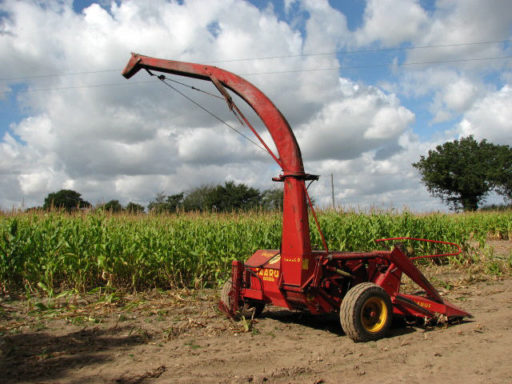When Jean-Luc Picourlat, a farmer from Béarnais passionate about computers, turned to robotics, he first sought to meet the needs he encounters in the field. This is how an autonomous tractor rich in promises for driving field crops or France cereals was born.
On the exhibition and demonstration areas of the seventh edition of the Word Fira, held at the beginning of last February in Toulouse, robots for field crops were not the most numerous. However, several newcomers had something to fascinate technophiles and simple curious, such as the E-k18 rover from the Bearnese company Softivert. Rarely, the latter is not a young start-up since it has been officiated in precision agriculture for about twenty years. However, it was only in 2018 that it embarked on the footings of Naïo Technologies and Agrointelli, with a notable difference: its founder is not an engineer but a farmer. In love with “iques” according to his expression – computer science, electronics, mechanics and, of course, robotics – the latter’s journey is not the most common!
Corn rows and code lines
Jean-Luc Picourlat grew up on a “traditional” farm in Béarn: 80 ha, dairy cows and silage corn. His future was all mapped out, except for one detail: he quickly discovered a passion for computer science. Self-taught, he made his debut on an Oric Atmos, a gaming microcomputer that has fallen into oblivion, while working on the family farm.
In 1989, the young farmer managed to code his own software for the management of the plots and the breeding of the farm. But it is during the purchase of a concentrate vending machine that his passion takes a turn: the manufacturer promises him a partnership if he succeeds in connecting the equipment to the Oric Atmos. Pari held, first computerised DAC sold in 90 and creation of the company Softivert in 2003.
Today, the company has seven employees, including Clément, Jean-Luc’s son, trained in Communication and Networks, and produces both software and associated electronics.
The genesis of the E-K18 rover
Thanks to the sensors and guidance systems he developed, Jean-Luc Picourlat quickly noticed that, on his tractor, most of the work boils down to the U-turn at the end of the field. If this maneuver were automated, there was no need to get on the machine and the time saving would be significant. From this comes the idea of an autonomous tractor, for which the farmer goes in search of a partner for the traction part in order to “focus on geolocation, automation and the creation of a range of tools,” he explains. The prototype will finally be designed entirely in-house and on own funds.
A Swiss army knife of field crops?
With its articulated chassis giving it a wasp size, its clean lines and its two small headlights, the E-K18 looks like a metal hymenoptera. It is because its creator wanted it above all transportable and adaptable: 1.5 t, not very wide, on wheels and equipped with two electric batteries giving it a power of 18 kW (equivalent to 24 hp).
The robot should thus be able to provide a wide range of field crop work, from land preparation to hoeing, sowing, fertilization and phytosanitary treatments. Equipped with a seed drill, “its autonomy would allow it to make 3 ha,” says Jean-Luc Picourlat.
A fenced construction site
On the model of automated mowers – it is also in his garden that the farmer found inspiration – the plot where the rover intervenes must be delimited by a peripheral wire. “If the robot pushes it, the voltage is recorded on a radio transmitter: the machine stops and the farmer receives an SMS. Same thing if someone enters the plot, “he explains. Let him not be told that there is an obstacle to freedom of movement: “It is an automated construction site forbidden to the public,” he objects, drawing a parallel with the securing of a work in the construction industry. It remains to be seen whether the most advantageous would be a perennial or mobile fence, like the solutions proposed in grazing. There is also the question of price: for the rover, “our goal is to stay around €100k, or even below,” he answers.
After the Sima in November and then the World Fira in February, the robot should be talked about again in June. On the farm where he was born, his mission will be to sow 5 hectares of corn. And Jean-Luc Picourlat hopes to multiply the tests afterwards, until the day when it will be necessary to be supported by a manufacturer to start mass production.
But the farmer is not in a hurry: “We will keep the baby for as long as possible to make him grow. Only then will the weaning come!” he jokes. Confident in his product, he is also confident about the future of agricultural robotics: “Transition there is, transition there will be,” he slips.
Source: terre-net.fr
